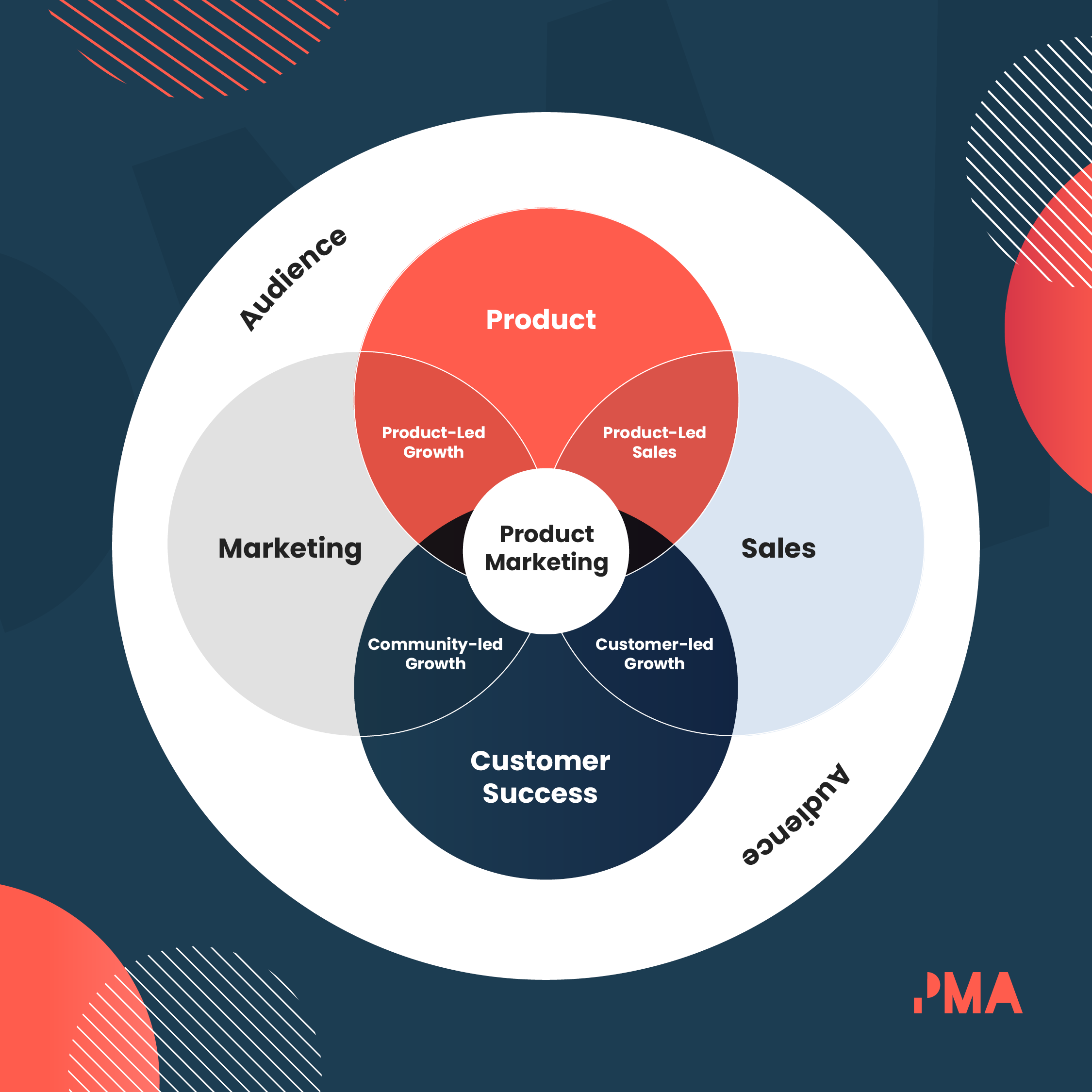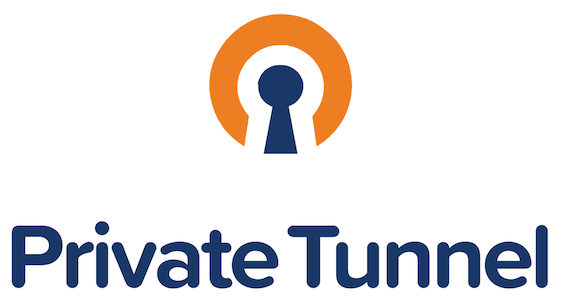Celebrating Global Accessibility Awareness Day 2023 Key Insights and Updates
Discover the key insights and updates from Global Accessibility Awareness Day 2023, celebrating inclusive design and digital accessibility advancements worldwide.

Global Accessibility Awareness Day (GAAD) is a crucial event dedicated to promoting digital accessibility and inclusion for individuals with disabilities. Celebrated annually on the third Thursday of May, GAAD aims to raise awareness about the importance of accessible technology and the need to eliminate barriers that hinder equal access to digital content. In 2023, GAAD highlighted significant advancements in accessibility and brought attention to ongoing challenges in the field.
Key Highlights from GAAD 2023
Advancements in Web Accessibility
Emerging Technologies and Tools
In 2023, the web accessibility landscape saw notable progress with the introduction of new technologies and tools designed to enhance the user experience for individuals with disabilities. Among the key advancements were
-
AI-Powered Accessibility Solutions Artificial intelligence (AI) has increasingly been leveraged to create tools that automatically identify and address accessibility issues. These solutions can analyze web content, suggest improvements, and even implement changes to enhance accessibility.
-
Enhanced Screen Readers Screen readers, which convert digital text into synthesized speech, have seen significant improvements. New features include better support for complex web applications and more natural-sounding voices, improving the overall user experience for visually impaired individuals.
-
Improved Accessibility Testing Tools New and updated accessibility testing tools have made it easier for developers to identify and fix accessibility issues. These tools often provide detailed reports and actionable recommendations, streamlining the process of ensuring compliance with accessibility standards.
Standards and Guidelines Updates
The web accessibility standards and guidelines have continued to evolve, with the Web Content Accessibility Guidelines (WCAG) 2.2 being a major update. This version introduces new success criteria and clarifies existing ones to address common accessibility issues. Key updates include
-
Increased Focus on Mobile Accessibility WCAG 2.2 includes specific guidelines for mobile devices, recognizing the growing importance of mobile accessibility. This update ensures that web content is accessible on a variety of screen sizes and input methods.
-
Enhanced Support for Cognitive Disabilities The new guidelines place greater emphasis on supporting users with cognitive disabilities, providing clearer instructions and simplifying complex interactions.
Challenges in Achieving Digital Accessibility
Persistent Accessibility Gaps
Despite significant advancements, several challenges remain in achieving comprehensive digital accessibility. Key issues include
-
Inconsistent Implementation While many organizations are adopting accessibility best practices, inconsistent implementation across different websites and applications can create barriers for users with disabilities. Ensuring uniform adherence to accessibility standards is crucial for providing an equitable digital experience.
-
Lack of Awareness and Training A significant barrier to digital accessibility is the lack of awareness and training among developers and designers. Many professionals are still unfamiliar with accessibility guidelines and best practices, which can result in unintentional accessibility issues.
-
Complex Web Applications The increasing complexity of web applications poses challenges for accessibility. Interactive elements, dynamic content, and custom controls can be difficult to make fully accessible, requiring ongoing attention and refinement.
Strategies for Overcoming Accessibility Challenges
To address these challenges, several strategies can be employed
-
Regular Accessibility Audits Conducting regular accessibility audits can help identify and rectify issues before they impact users. These audits should be part of the development process, ensuring that accessibility is considered from the outset.
-
Comprehensive Training Programs Investing in training programs for developers, designers, and content creators can enhance their understanding of accessibility requirements and best practices. Training should be ongoing to keep up with evolving standards and technologies.
-
User Testing with Diverse Groups Engaging users with diverse disabilities in testing can provide valuable insights into real-world accessibility issues. This approach ensures that the solutions implemented effectively address the needs of all users.
The Future of Digital Accessibility
Ongoing Innovations and Trends
The future of digital accessibility is poised for further innovation and improvement. Key trends to watch include
-
Greater Integration of AI AI is expected to play an increasingly prominent role in accessibility, with more sophisticated tools for automated testing, content modification, and personalized user experiences.
-
Increased Emphasis on Inclusive Design The concept of inclusive design, which aims to create products and services that are usable by everyone, regardless of their abilities, is gaining traction. This approach focuses on designing from the outset with accessibility in mind, rather than retrofitting solutions.
-
Enhanced Collaboration Across Sectors Collaboration between technology companies, accessibility advocates, and policy-makers is essential for driving progress in digital accessibility. By working together, these groups can address systemic issues and develop comprehensive solutions.
Global Accessibility Awareness Day 2023 underscored the importance of continued efforts to improve digital accessibility. While significant advancements have been made, challenges remain that require ongoing attention and innovation. By embracing new technologies, updating standards, and addressing persistent issues, we can work towards a more inclusive digital world for everyone.
As we move forward, it is crucial to remain vigilant and proactive in our approach to accessibility, ensuring that digital content and services are accessible to all individuals, regardless of their abilities. Celebrating GAAD serves as a reminder of our collective responsibility to create an equitable digital environment and to continue striving for progress in the field of accessibility.
In-Depth Analysis of Accessibility Trends
AI and Accessibility Transformative Potential
How AI is Shaping AccessibilityArtificial intelligence is transforming the landscape of digital accessibility by offering innovative solutions that address a wide range of accessibility challenges. Key areas where AI is making an impact include
-
Automated Accessibility Analysis AI-powered tools can scan web content for accessibility issues more efficiently than manual reviews. These tools use machine learning algorithms to detect and flag potential problems, such as missing alternative text for images or improper use of HTML elements.
-
Real-Time Adaptation Some AI solutions can adapt web content in real-time to meet the needs of users with disabilities. For example, AI can modify text size, contrast, and layout dynamically based on user preferences and requirements.
-
Predictive Accessibility AI can predict potential accessibility issues based on historical data and user behavior patterns. This predictive capability helps developers proactively address issues before they impact users.
Challenges and Limitations of AI in Accessibility
While AI holds great promise, it also presents challenges
-
Accuracy and Reliability AI tools are not infallible and may produce false positives or miss certain issues. Relying solely on AI for accessibility can lead to incomplete solutions, making human review and intervention essential.
-
Bias and Fairness AI systems can inherit biases from their training data, which may affect their ability to accurately identify and address accessibility issues for diverse user groups.
-
Complexity of Implementation Integrating AI solutions into existing workflows can be complex and resource-intensive. Organizations need to carefully evaluate and implement AI tools to ensure they complement human expertise effectively.
Inclusive Design Moving Beyond Compliance
The Principles of Inclusive Design
Inclusive design focuses on creating digital experiences that are usable by everyone, regardless of their abilities or disabilities. Key principles of inclusive design include
-
Flexibility Design should accommodate a wide range of user preferences and needs. This includes providing multiple ways to interact with content, such as keyboard shortcuts and voice commands.
-
Simplicity Aim for simplicity in design to reduce cognitive load and make content more accessible. Clear and straightforward navigation, consistent layouts, and easy-to-understand instructions contribute to a better user experience.
-
Perceptibility Ensure that information is presented in ways that are perceptible to all users. This includes providing text alternatives for non-text content, using high-contrast colors, and ensuring that content is accessible without relying solely on visual or auditory cues.
Benefits of Adopting Inclusive Design
Adopting inclusive design practices offers several benefits
-
Broader Audience Reach By designing for inclusivity, organizations can reach a wider audience, including individuals with disabilities and those who may have temporary impairments.
-
Enhanced User Experience Inclusive design often results in a better overall user experience for all users, not just those with disabilities. Features such as clear navigation and flexible interactions benefit everyone.
-
Legal and Ethical Compliance Embracing inclusive design helps organizations comply with legal requirements and demonstrates a commitment to ethical practices in creating accessible digital experiences.
Collaboration and Advocacy Driving Accessibility Forward
The Role of Advocacy Groups
Advocacy groups play a crucial role in promoting accessibility and driving change. These organizations
-
Raise Awareness Advocacy groups work to raise awareness about accessibility issues and the importance of inclusive design. They often engage in public campaigns, educational initiatives, and advocacy efforts to influence policy and practice.
-
Provide Resources Many advocacy groups offer resources such as guidelines, best practices, and training materials to support organizations in implementing accessible design.
-
Advocate for Policy Change Advocacy groups often work with policymakers to develop and enforce regulations that promote accessibility and protect the rights of individuals with disabilities.
Collaboration Between Stakeholders
Collaboration between various stakeholders is essential for advancing accessibility
-
Tech Industry Technology companies are instrumental in developing and implementing accessibility solutions. Collaboration within the tech industry can lead to the creation of new tools and technologies that address accessibility challenges.
-
Educational Institutions Educational institutions can contribute by incorporating accessibility training into their curricula and conducting research on accessibility issues.
-
Government and Policy Makers Government agencies and policymakers play a key role in setting standards and regulations for accessibility. Their involvement ensures that accessibility remains a priority at the national and international levels.
Implementing Accessibility Best Practices
Creating an Accessible Digital Experience
Key Practices for Web Developers
For web developers, implementing accessibility best practices is crucial in ensuring that digital content is usable by everyone. Here are some essential practices to follow
-
Use Semantic HTML Proper use of semantic HTML elements (like
<header>,<nav>,<main>, and<footer>) helps screen readers and other assistive technologies understand the structure of a page. This improves navigation and content comprehension for users with disabilities. -
Provide Text Alternatives Always include descriptive alternative text (
altattributes) for images, videos, and other non-text content. This allows screen readers to convey the purpose and content of visual elements to users who cannot see them. -
Ensure Keyboard Accessibility Ensure that all interactive elements on a web page, such as buttons, links, and form controls, are accessible via keyboard navigation. This is essential for users who rely on keyboard-only input methods.
-
Implement ARIA Landmarks Use Accessible Rich Internet Applications (ARIA) landmarks to define regions of a page, such as navigation, main content, and sidebars. This helps screen reader users quickly locate and navigate through different sections of the page.
-
Design for Color Contrast Ensure that text and interactive elements have sufficient color contrast against their backgrounds. This improves readability for users with low vision or color blindness.
Best Practices for Content Creators
Content creators also play a vital role in maintaining accessibility. Key practices include
-
Use Clear and Simple Language Write content in clear, concise language to make it understandable for all users, including those with cognitive disabilities. Avoid jargon and complex sentence structures whenever possible.
-
Provide Captions and Transcripts For multimedia content, such as videos and podcasts, provide captions and transcripts to make the content accessible to users who are deaf or hard of hearing.
-
Create Accessible Documents When creating documents (e.g., PDFs), ensure they are accessible by using proper headings, alt text for images, and accessible tables. Tools like Adobe Acrobat offer features to help with document accessibility.
-
Ensure Logical Content Structure Use headings, lists, and other structural elements to organize content logically. This helps users with disabilities navigate and understand the content more easily.
Evaluating and Testing Accessibility
Tools for Accessibility Evaluation
Regular evaluation and testing are essential for maintaining accessibility. Several tools can assist in this process
-
Automated Testing Tools Tools like Lighthouse, Axe, and WAVE provide automated checks for common accessibility issues. While these tools are useful for identifying potential problems, they should be complemented by manual testing.
-
Browser Extensions Accessibility browser extensions can help developers test and evaluate web content directly within their browsers. These extensions often provide real-time feedback and suggestions for improvement.
-
Screen Readers Testing with screen readers, such as NVDA or VoiceOver, allows developers to experience their content as users who rely on these technologies do. This hands-on testing helps identify and address specific accessibility issues.
Manual Testing and User Feedback
Automated tools alone are not sufficient for ensuring full accessibility. Manual testing and user feedback are crucial components of the evaluation process
-
Manual Testing Conduct manual testing to identify issues that automated tools may miss. This includes checking keyboard navigation, screen reader compatibility, and visual design.
-
User Feedback Engage users with disabilities in testing to gain insights into real-world accessibility issues. Their feedback can provide valuable perspectives on how well your digital content meets their needs.
Case Studies Success Stories in Accessibility
Examples of Accessible Websites and Applications
Several organizations have made significant strides in accessibility, serving as models for best practices. Here are a few examples
-
Example 1 The BBC The BBC has been a leader in digital accessibility, implementing robust accessibility features across its website and media platforms. Their commitment to inclusive design includes comprehensive accessibility guidelines and continuous user testing.
-
Example 2 Apple Apple is known for integrating accessibility features into its products and services. Features such as VoiceOver, Magnifier, and Color Filters demonstrate Apple's commitment to creating accessible technology.
-
Example 3 Government Websites Many government websites have made strides in accessibility to meet legal requirements and serve a diverse population. Examples include the U.S. Web Design System (USWDS) and the UK Government Digital Service (GDS), both of which emphasize accessibility in their design and development processes.
Lessons Learned from Successful Accessibility Initiatives
These success stories highlight several key lessons
-
Commitment to Accessibility Achieving high levels of accessibility requires a long-term commitment from all stakeholders, including management, developers, and content creators.
-
Ongoing Improvement Accessibility is an ongoing process that involves continuous evaluation and improvement. Successful organizations regularly update their accessibility practices and tools.
-
User-Centered Design Involving users with disabilities in the design and testing process ensures that accessibility solutions address real-world needs and challenges.
Looking Ahead The Future of Accessibility
Emerging Trends and Technologies
The field of accessibility is constantly evolving, with new trends and technologies shaping the future
-
Virtual and Augmented Reality As virtual and augmented reality technologies become more prevalent, ensuring accessibility in these immersive environments will be a critical challenge. Innovative solutions will be needed to make VR and AR experiences accessible to all users.
-
Internet of Things (IoT) The growing number of connected devices presents new opportunities and challenges for accessibility. Ensuring that IoT devices and applications are accessible will require thoughtful design and development.
-
Personalized Accessibility Solutions Advances in AI and machine learning may lead to more personalized accessibility solutions that adapt to individual user needs and preferences in real time.
Global Collaboration for Accessibility
Addressing global accessibility challenges will require collaboration across borders and sectors
-
International Standards Developing and adopting international accessibility standards can help create a more consistent approach to accessibility worldwide.
-
Cross-Sector Partnerships Partnerships between technology companies, advocacy groups, and government agencies can drive progress and innovation in accessibility.
-
Inclusive Policy Development Policymakers around the world must work together to create and enforce regulations that promote digital accessibility and protect the rights of individuals with disabilities.
As we reflect on the insights and updates from Global Accessibility Awareness Day 2023, it is clear that significant progress has been made in the field of digital accessibility. However, ongoing challenges and evolving technologies require continuous attention and effort.
By implementing best practices, leveraging new technologies, and fostering collaboration, we can work towards a more inclusive digital environment for all. Celebrating GAAD serves as a reminder of our shared responsibility to ensure that digital experiences are accessible to everyone, regardless of their abilities.
Frequently Asked Questions (FAQ) About Digital Accessibility and GAAD
1. What is Global Accessibility Awareness Day (GAAD)?
Global Accessibility Awareness Day (GAAD) is an annual event celebrated on the third Thursday of May. Its purpose is to raise awareness about the importance of digital accessibility and the need for inclusive design in technology. The day highlights advancements, challenges, and ongoing efforts to make digital content accessible to all users, including those with disabilities.
2. Why is digital accessibility important?
Digital accessibility is crucial because it ensures that individuals with disabilities can access and use digital content and services. This includes websites, applications, and multimedia content. Accessibility helps create an equitable digital environment, allowing people with visual, auditory, cognitive, or motor impairments to participate fully in online activities and services.
3. What are some common accessibility issues in web design?
Common accessibility issues include:
- Lack of Alt Text: Images and multimedia without descriptive alternative text can be inaccessible to screen reader users.
- Inadequate Color Contrast: Poor contrast between text and background colors can make content difficult to read for users with visual impairments.
- Keyboard Navigation Problems: Interactive elements that are not navigable by keyboard can exclude users who rely on keyboard input.
- Complex Layouts: Unstructured or complex layouts can be challenging for screen reader users to interpret.
4. How can developers improve web accessibility?
Developers can improve web accessibility by:
- Using Semantic HTML: Employ proper HTML elements to structure content meaningfully.
- Providing Text Alternatives: Include descriptive alt text for images and multimedia.
- Ensuring Keyboard Accessibility: Make sure all interactive elements are accessible via keyboard.
- Implementing ARIA Landmarks: Use ARIA roles and landmarks to help screen readers navigate content.
- Designing for Color Contrast: Choose color schemes that provide sufficient contrast for readability.
5. What tools are available for testing web accessibility?
Several tools can assist in testing web accessibility:
- Automated Testing Tools: Tools like Lighthouse, Axe, and WAVE can identify common accessibility issues.
- Browser Extensions: Accessibility browser extensions offer real-time testing and feedback.
- Screen Readers: Testing with screen readers like NVDA or VoiceOver helps understand how content is experienced by users who rely on these technologies.
6. How can content creators ensure their content is accessible?
Content creators can ensure accessibility by:
- Using Clear Language: Write content in simple, understandable language.
- Providing Captions and Transcripts: Include captions for videos and transcripts for audio content.
- Creating Accessible Documents: Ensure documents (e.g., PDFs) are formatted with accessible features like headings and alt text.
- Organizing Content Logically: Use headings and lists to structure content clearly.
7. What role do advocacy groups play in accessibility?
Advocacy groups:
- Raise Awareness: Promote the importance of digital accessibility through campaigns and educational initiatives.
- Provide Resources: Offer guidelines, best practices, and training materials to support accessibility efforts.
- Advocate for Policy Change: Work with policymakers to develop and enforce accessibility regulations.
8. What are some examples of successful accessibility initiatives?
Successful accessibility initiatives include:
- The BBC: Known for its comprehensive accessibility features across its media platforms.
- Apple: Integrates accessibility features into its products, such as VoiceOver and Magnifier.
- Government Websites: Many government sites adhere to accessibility standards and regulations, such as the U.S. Web Design System (USWDS) and the UK Government Digital Service (GDS).
9. How can organizations stay updated on accessibility standards and best practices?
Organizations can stay updated by:
- Following Accessibility Organizations: Subscribe to updates from groups like the Web Accessibility Initiative (WAI) and the International Association of Accessibility Professionals (IAAP).
- Participating in Training: Engage in ongoing accessibility training and certification programs.
- Attending Conferences: Join conferences and workshops focused on accessibility to learn about the latest trends and technologies.
10. What is the future of digital accessibility?
The future of digital accessibility includes:
- Advancements in AI: AI will play a larger role in automating and enhancing accessibility solutions.
- Inclusive Design: Greater emphasis on designing products and services from the outset with accessibility in mind.
- Emerging Technologies: Addressing accessibility challenges in virtual reality, augmented reality, and IoT devices.
- Global Collaboration: Increased international collaboration and standardized regulations to promote accessibility worldwide.
Get in Touch
Website – https://www.webinfomatrix.com
Mobile - +91 9212306116
Whatsapp – https://call.whatsapp.com/voice/9rqVJyqSNMhpdFkKPZGYKj
Skype – shalabh.mishra
Telegram – shalabhmishra
Email - info@webinfomatrix.com
What's Your Reaction?
























